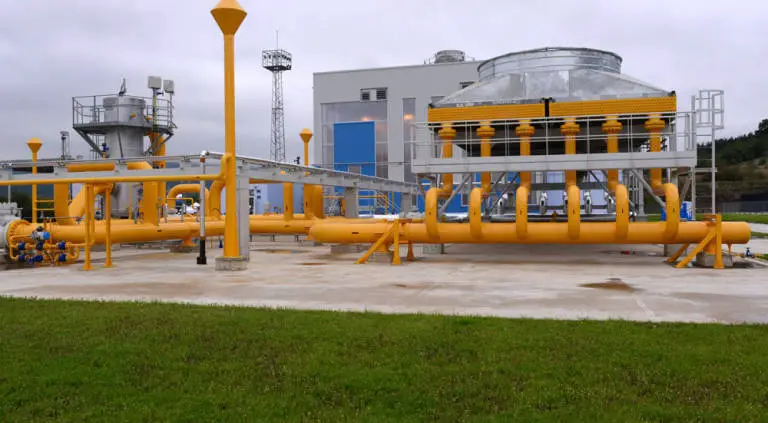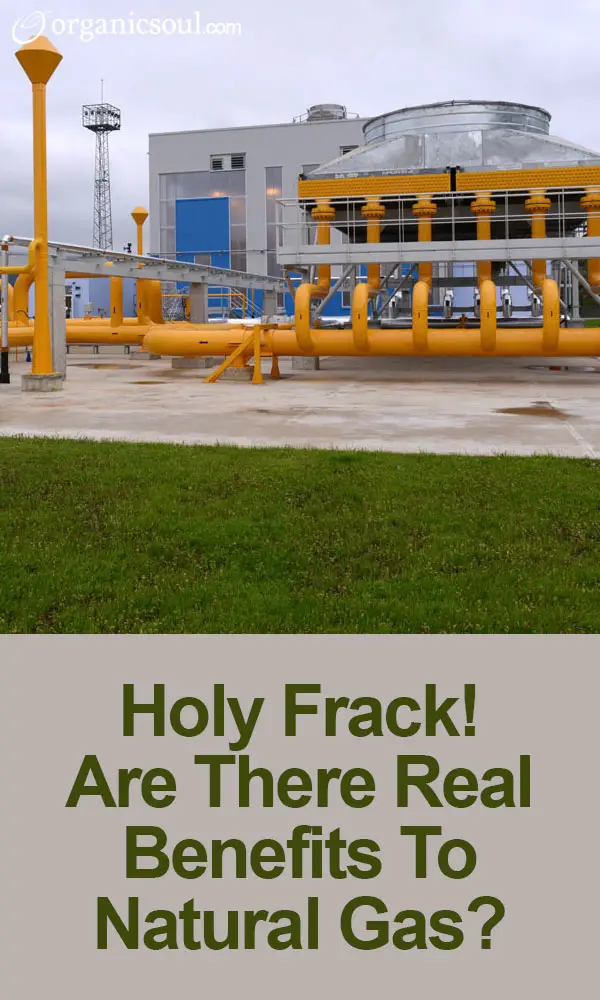
Better known for its street name “fracking”, fracturing – specifically hydraulic fracturing – is the process we go through to get natural gas out of the earth. The idea with both is to crack open the earth, allow natural gases and/or oil to seep out into the wellbore, and then collect. Many argue that natural gas is a clean, safe alternative to foreign and domestic oil; however, it’s hard to reconcile with the clear defects in the process.
Like Organic Soul on Facebook
Benefits of Natural Gas
Without a doubt, there are some serious benefits to natural gas. Let’s highlight a few commonly mentioned ones here.
- Cleanliness – By far, natural gas is the cleanest of all fossil fuels. Advocates promote the EPA’s April 2010 evaluation of natural gases, which state, out of tail pipes and smoke stacks, natural gas produces 50 percent less greenhouse gases.
- Domestic production – Recently, T. Boone Pickens appeared on the Daily Show with Jon Stewart to press this point hard: domestic natural gas is a safer and more convenient choice, not just environmentally, but politically. If we don’t use our domestic sources of energy, we are forced to go to our international counterparts, namely the Organization of Petroleum Exporting Countries (OPEC).
- Efficient and Versatile – Natural gas, according to some estimates, has a production, processing, and transporting efficiency of roughly 90 percent. In addition, the gas has a number of uses, whether it’s drying your socks, heating your home, or boiling your water.
Drawbacks to Natural Gas
As we would assume, there are some serious drawbacks that counterpoint those benefits. In addition, we’re beginning to hear more and more about them in the news.
- Cleanliness is overstated – True, according to April’s estimates, natural gas is about 50 percent cleaner. However, even more recently, the EPA has revised those statements, leading to much consequence. They’ve doubled their estimates on leaks and looked much more critically into the efficiency of the US gas-fired plants. The new estimates read that it is only about 40 percent cleaner, and, even worse, about half (800) of the gas-fired plants are so inefficient, they are only about 25 percent cleaner. By all means, gas is not an environmental panacea.
- Fracking is a huge danger – The process to get our natural gas, fracking, poses a threat to those near wells, as well as their livestock. Around the country, there have been reports coming in of flammable tap water, exploding houses, cattle dying after drinking contaminated water, and more and more instances of spills. The chemicals used in hydraulic fracturing, which include “hydrochloric acid, solvents, surfactants, petroleum-based lubricants, corrosion inhibitors, and microbe killers”, are both corrosive and hazardous on the environment. We can hardly label this an eco-safe practice.
- Natural Gas is not a Renewable Resource – Natural gas, just like crude oil, is a non-renewable resource. They take millions of years to form, meaning they won’t be here forever. Although some projections argue we have a few hundred years supply of natural gas (at current consumption levels), the numbers are uncertain and if we get on a energy plan that comprehensively uses natural gas, we’ll need to perfect the practice.
Weighing the Two
Given these summarized points, what is a legislator to do? In the spirit of deliberation, here are a few suggestions:
First, while natural gas isn’t a renewable resource, it offers jobs in the United States, a cleaner alternative, and less of a dependence on foreign energy (which, through our purchases, leads to us funding both sides of our wars). It deserves serious consideration, especially because it is a energy source that provides combustion, unlike solar, wind, or hydro energy. That said, let’s bite the bullet and tackle the major issues:
- We must first protect our people. Technology and strategic planning need to be further developed to protect and minimize the instances of spills, leaks, and contamination. The first step of assuring this is accountability. It’s time for these companies to report specifics on their fracturing operations.
- At the same time, we need to keep it a profitable business. We have a few options to do this: place higher tariffs on foreign oil importing, offer subsides, and, through the investments we’ll make in green education, provide a competent, yet fresh workforce that we can work with. Unions, government, and business – if working in the spirit of the country – can reach
 a solution that helps promote early development, and, in effect, long-term security for all three parties.
a solution that helps promote early development, and, in effect, long-term security for all three parties. - Finally, from the start of this new industry, we need to plan our transition off it. Although this has a certain taste of counter intuitiveness, because it is a non-renewable resource, we must recognize that proper planning will benefit our grandchildren and their children in the future. I refer to the Native American practice of considering what will happen seven generations down the line; this practice, ripe with moral value, is something we need to begin implementing more vigorously.
Like all other contentious issues on the domestic and international realm, this provided a difficult set of problems. Despite this, the sooner we take this project on, the sooner the solution will realize itself.















